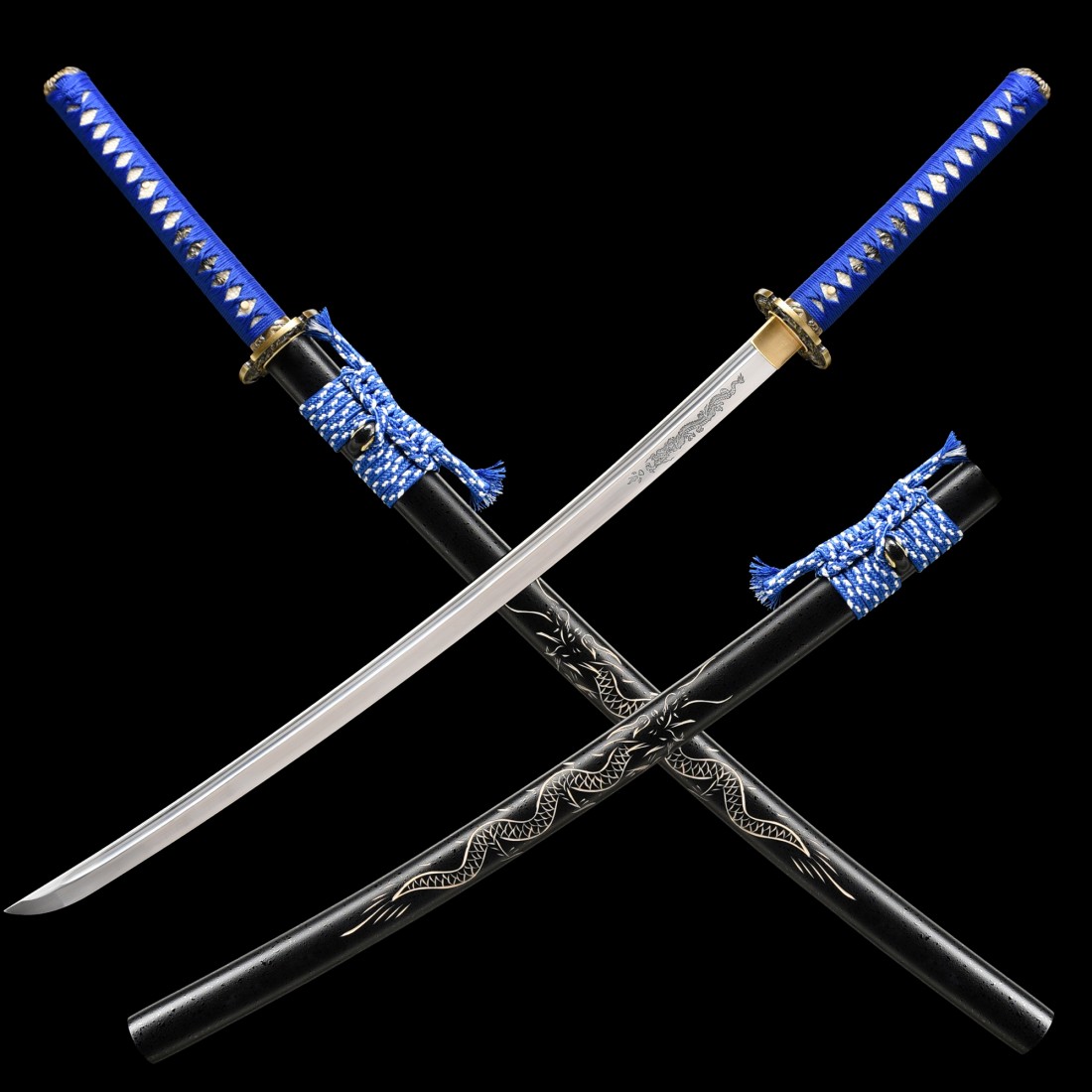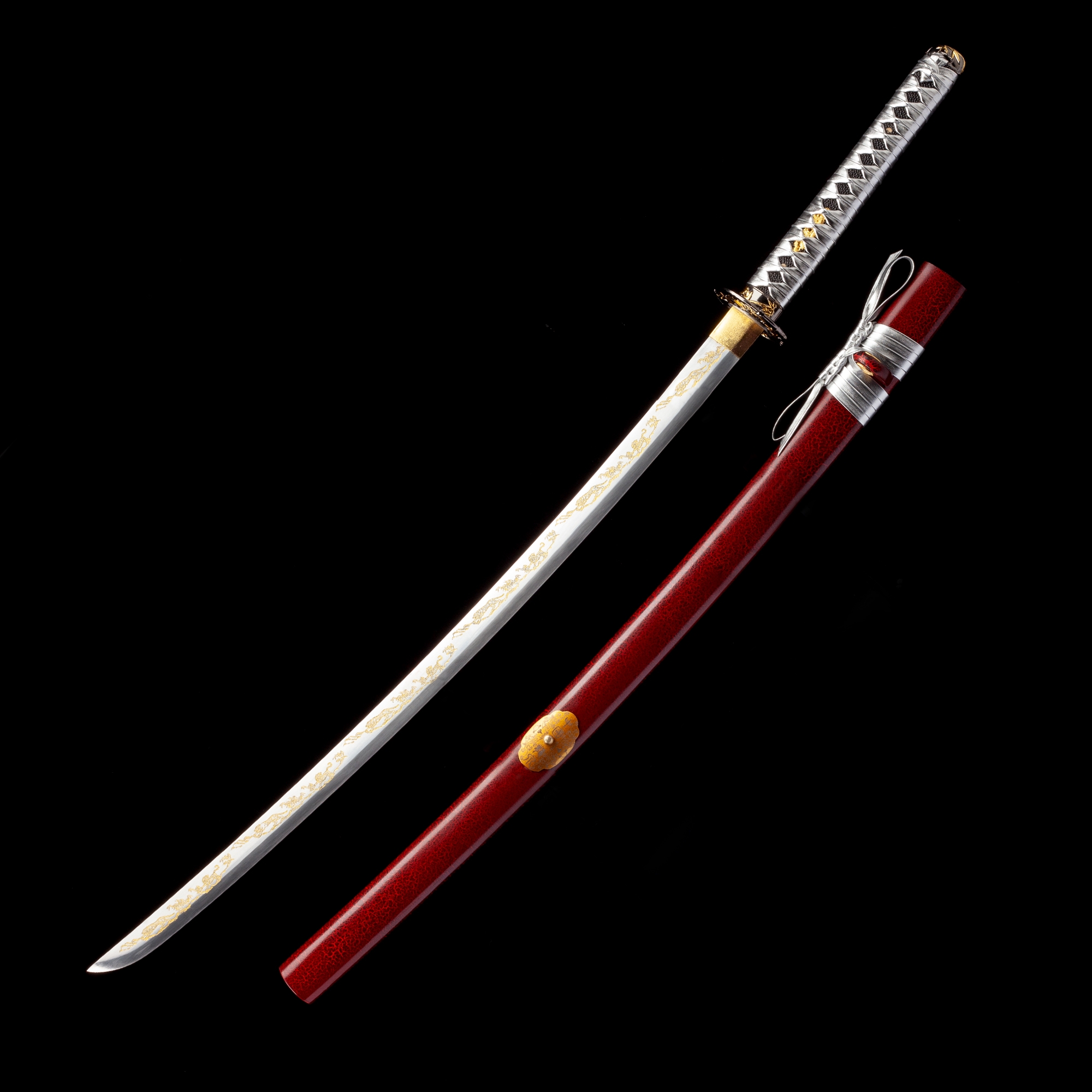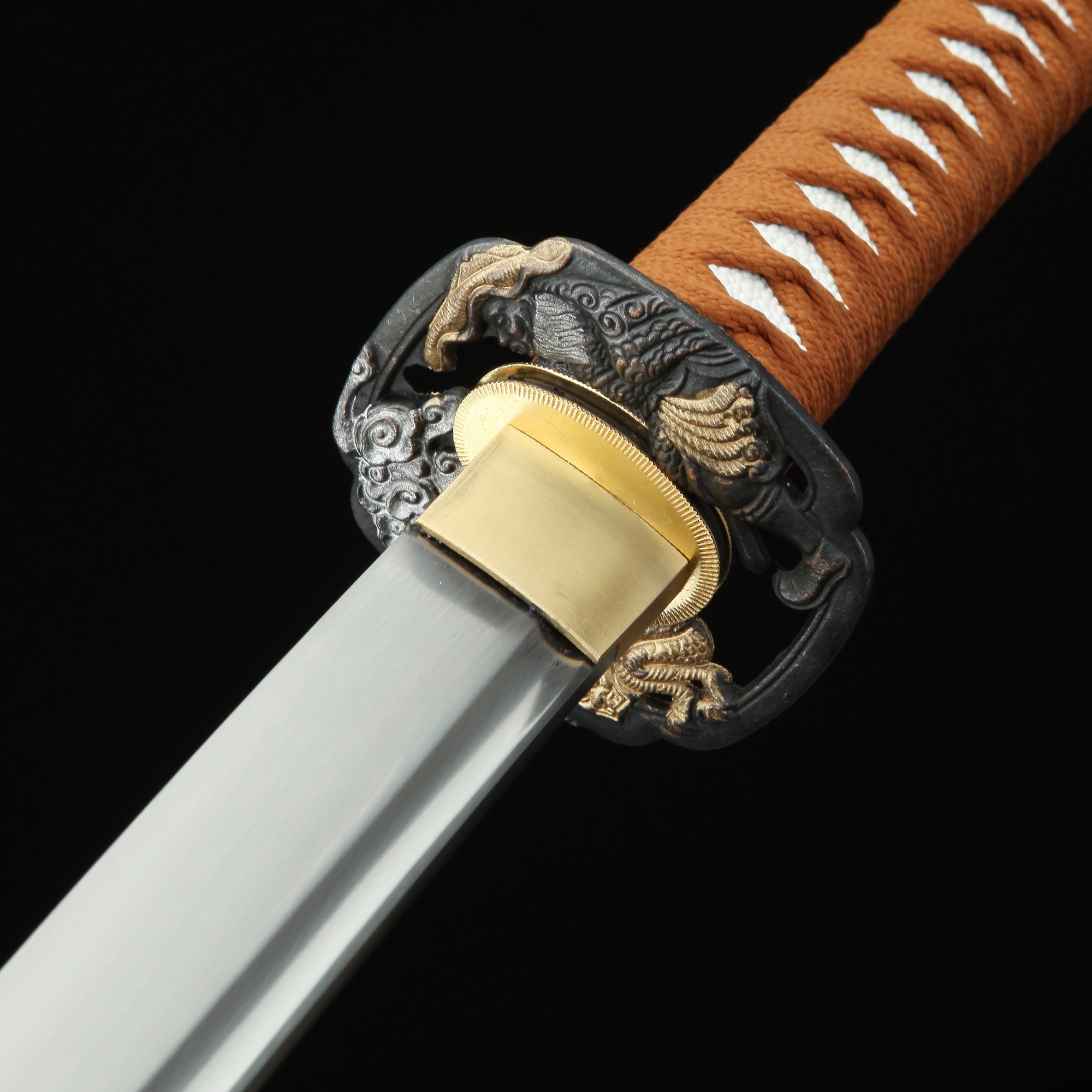Katana Kambot - Exploring Performance And Practicality
Have you ever stopped to think about what makes certain tools or instruments truly stand out, making them a joy to use and really effective at what they do? So, it's pretty interesting how some things just feel right, whether you're talking about a piece of music gear that helps you create amazing sounds or something built for a more physical kind of action. We're going to chat a bit about katanas and some related gear, looking at how they perform and what people think about them.
We often hear bits and pieces about these items, from how a musician sets up their sound to the actual feel of a blade. There's a lot of chatter, you know, about what works well and what might not be quite as good. People share their experiences, and that really helps us get a sense of what's out there and what might be a good fit for our own needs or interests. It's all about finding that right blend of function and feel, isn't it?
This discussion will cover a range of thoughts and observations, from the way a katana handles when cutting through tough materials to how a guitar amplifier shapes a musician's sound. We'll also touch on what folks say about different brands and even how these things are shown in movies. It’s a pretty mixed bag of topics, but all of them connect back to the idea of performance and how something holds up when put to the test, especially when we think about the idea of a "katana kambot" and its various uses.
Table of Contents
- What Makes a Katana Perform for Katana Kambot?
- How Does a Katana's Edge Hold Up in Katana Kambot Situations?
- Was the Katana Always a Primary Tool for Katana Kambot?
- What About Craftsmanship - Like a Hanbon Forge Katana for Katana Kambot?
- Katana's Motion - Slicing vs. Shearing for Katana Kambot
- Ronin Katana - What's the Word on This Brand for Katana Kambot?
- Swords in Stories - Movie Katana Kambot Looks
- The Boss Katana Amp and Katana Kambot Sound
What Makes a Katana Perform for Katana Kambot?
When you think about a katana, or even a piece of music equipment, it's interesting to consider what makes it truly useful. For instance, the Katana FXFloorboard, a special kind of digital setup for guitar sounds, was put together by someone who actually plays music for a living. That means it's built from the ground up to be more enjoyable to use and helps musicians get more done, which is pretty important, you know, for anyone trying to make music. It's about practical use and a good feel.
Comparing different pieces of gear can be a bit like comparing apples and oranges sometimes, but it helps us understand what each one brings to the table. I won't say anything negative about the Mustang amp, for example, but I did have a chance to try one out a good ten years back. It's just one of those things where you get a feel for what works for you personally, and what doesn't quite click. That experience helps shape your opinions on what you might choose for your own sound or for your own "katana kambot" activities.
Now, shifting gears a bit, when we talk about a physical katana, its ability to cut is a big part of its story. My own katana, for instance, will have a blade shape designed for cutting through tough things. This means it should be able to slice through both fresh, green bamboo and the dried, yellow kind. That's a real test of how well a blade is made and how its shape helps it do its job. It's all about having the right tool for the job, and for a katana, that often means being able to cut effectively, making it ready for any "katana kambot" challenge.
How Does a Katana's Edge Hold Up in Katana Kambot Situations?
When it comes to the materials used in a blade, there's a lot of discussion about what's best. People often talk about different kinds of steel, like 3V, which is known for being really tough, or M4, which is said to keep its sharpness for a longer time. It makes you wonder, you know, about what kind of material would make a katana that truly stands out. Every choice in material has an impact on how the sword performs, especially when it faces a tough task or a "katana kambot" type of scenario.
The part of a katana that does the cutting, the edge itself, is usually made very hard. This is so it can stay sharp and perform its task well. However, this hardness also means that if it hits something else, like another blade, it could chip or get dull. It's a bit of a trade-off, isn't it? You want it to be sharp, but you also need to be aware of its limits when it comes to impact. This is a pretty important detail for anyone considering the practical aspects of a blade, perhaps for "katana kambot" training or demonstrations.
So, if you're thinking about how to keep a blade in good shape, especially if you're worried about it getting damaged by hitting something hard, the most sensible approach is to deal with whatever you're facing before it can cause any trouble. In the context of a sword, this might mean using skill and timing to avoid direct clashes that could harm the edge. It's about being smart and using the right technique to preserve the tool, which is a key part of any "katana kambot" activity where the blade's condition matters a lot.
Was the Katana Always a Primary Tool for Katana Kambot?
Historically, the katana often served as a second choice for a fighter, and sometimes even a third, if that person preferred using something like an axe or a club. It wasn't always the main thing someone reached for in a fight. This gives you a different perspective on its role, doesn't it? It suggests it was a useful tool, but perhaps not the one always at the forefront of every "katana kambot" encounter. This kind of historical detail helps us appreciate the broader context of its use.
Unless you were talking about someone who was specifically trained in fighting with two swords, things would have gone pretty wrong if a fighter had to rely solely on their katana. This implies that while the katana was certainly capable, it was often part of a larger set of skills and tools a warrior might have. It really highlights how specialized some fighting styles were, and how the katana fit into that bigger picture. It paints a picture of how serious a situation might be if a fighter found themselves in a bind, needing their sword for a crucial "katana kambot" moment.
What About Craftsmanship - Like a Hanbon Forge Katana for Katana Kambot?
When people talk about the making of these swords, you often hear about specific places and methods. For example, there's talk about how Hanbon Forge, a maker in China, produces a 1060 Damascus katana. This particular sword is made with a process called clay tempering, which means it's hardened in different ways across its surface. This kind of detail, you know, about how a sword is actually put together, matters a lot to those who appreciate fine craftsmanship and how it affects the sword's overall feel and performance for any "katana kambot" action. Marky Steele mentioned this on August 12, 2021.
Katana's Motion - Slicing vs. Shearing for Katana Kambot
The katana is really well-suited for a slicing kind of movement. That's why it has that noticeable curve to its blade. This shape helps it draw through a target, making a long, clean cut. On the other hand, something like a kukri, a different kind of blade, is more about a shearing motion. This is because its edge is more pronounced when you use it in a dragging way, sort of like a powerful chop and pull. It's a pretty interesting difference in how these blades are designed to work, and it shows how specific shapes lend themselves to specific actions, especially when you think about the practical application for "katana kambot" techniques.
Ronin Katana - What's the Word on This Brand for Katana Kambot?
I've heard some good things about the Ronin Katana brand, and I was wondering what people generally think about them. It's always helpful to get a sense of what others who have experience with a product feel. When you're looking into something like a sword, you want to know if it's considered good quality and if it lives up to its reputation. So, I guess I'd ask, what's the reason you're looking at this particular brand? What are you hoping to get out of it, especially if you're thinking about it for any "katana kambot" practice?
Swords in Stories - Movie Katana Kambot Looks
A few years ago, I started noticing that some characters in movies were wearing their swords on their backs. You see this with characters like Conan, Blade, and even the girl who uses a katana in "The Walking Dead." It's a common visual in fiction, and it does look pretty striking on screen. It makes you wonder, though, if that's really a practical way to carry a sword in a real-life situation. It’s an interesting detail that movies often add for dramatic effect, giving a certain flair to the idea of "katana kambot" in a story.
They certainly appear impressive in those films, but are they truly practical or just for show? It’s a question many people have when they see something like that. Does anyone out there own one of these movie-style swords and believe they are a good investment? It’s one thing for something to look cool, but quite another for it to actually be worth the money or useful in any real sense. This curiosity about appearance versus function is a common thread, especially when we consider the portrayal of "katana kambot" in popular culture.
I actually like the knives made by some of these companies, but I'm still not entirely sure about their swords. It's like, sometimes a company is really good at one thing but maybe not as strong in another. So, while the knives might be solid, the swords could be a different story. It just goes to show that you need to look at each product on its own merits, and not assume that everything from a particular maker will be the same quality. This applies to any tool, really, whether it's for everyday use or for something like "katana kambot" training.
The Boss Katana Amp and Katana Kambot Sound
Jeff Donnell mentioned the Boss Katana amp on December 4, 2021, saying he was thinking about getting one. He was wondering if anyone could share their PSG settings for it, just to have a place to begin. It's always helpful to get a few ideas from others who have already figured things out, isn't it? He also asked if the acoustic setting on the amp was good for acoustic guitars. These are the kinds of questions musicians ask when they're trying to get the best sound possible, connecting the gear to their musical "katana kambot" performance.
Larry Dering shared a picture of a Katana 100 amp on March 7, 2020. He noted that people should ignore the power selection in the picture because he took it when the amp was turned off. This is a common thing, you know, when you're showing off gear, sometimes the settings aren't quite right for a live performance. It's just a little detail that helps explain what's going on in the image. It's a small but important note for anyone looking at the picture and trying to understand the amp's features, especially if they're thinking about its sound for their own musical "katana kambot" efforts.
So, in essence, we've gone over quite a few things about katanas and even some related musical gear. We touched on how a katana's design helps it cut, how its edge holds up, and its historical role as a secondary weapon. We also looked at how different makers approach their craft, like Hanbon Forge, and compared the katana's slicing motion to a kukri's shearing action. We even considered what people think about brands like Ronin Katana and how swords are shown in movies. Finally, we talked a bit about the Boss Katana amp and what musicians look for when setting it up. It's been a broad look at performance, practicality, and perception when it comes to these interesting items.

HanBon Forged Japanese Samurai Sword Real Dragon Katana T10 Steel Full

Japanese Samurai Katana at Alonzo Caraway blog

Japanese Samurai Katana at Alonzo Caraway blog